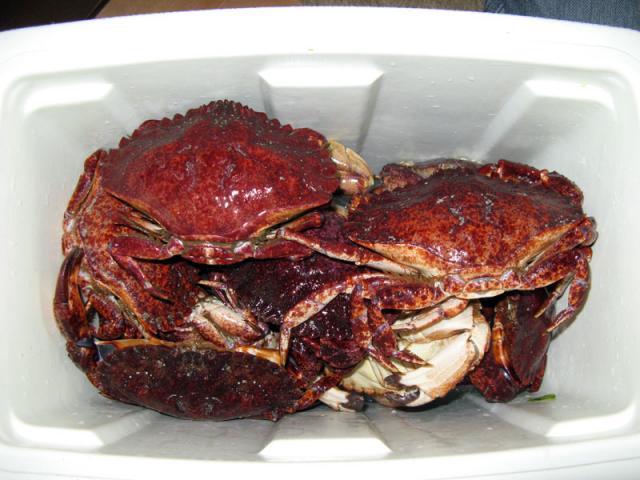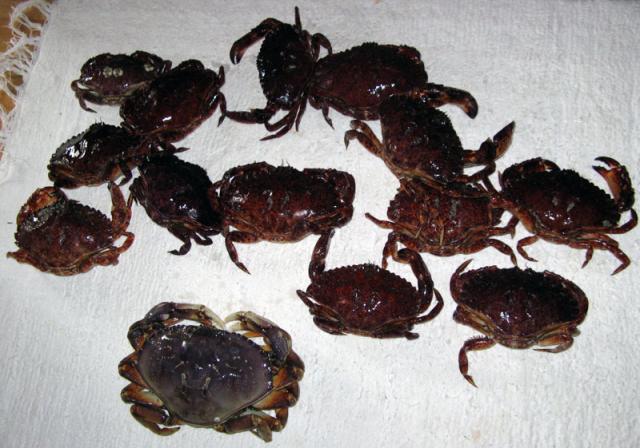Looks good!
Navigation
Install the app
How to install the app on iOS
Follow along with the video below to see how to install our site as a web app on your home screen.
Note: This feature may not be available in some browsers.
More options
You are using an out of date browser. It may not display this or other websites correctly.
You should upgrade or use an alternative browser.
You should upgrade or use an alternative browser.
Crabbing and Clam digging in the PNW? UPDATE! SUCCESSS!!!!
- Thread starter silkiechicken
- Start date
- Thread starter
- #32
I'm going to try to cook them tonight! LOL, we'll see how much sand I end up with. They say don't eat a dead clam... but what if I know it died because I broke it's shell? People shuck them at the cleaning station and I assume eat them later and that's dead for x amount of time for sure, so what's so different if the clam died in the shell at the same time due to oh, crushing it?

You'd see the string start to move sideways and you could feel the crab pulling it too. Slowly you'd walk him in close and then SWOOP! Crab in your icechest.

Your crabs are much bigger and yummier than what we could catch though.
They don't die when you shuck them. I used to run a wholesale seafood company.
 Oysters and clams and muscles etc will quiver if you watch them when fresh shucked. They live for several days at low temps and on ice.
Oysters and clams and muscles etc will quiver if you watch them when fresh shucked. They live for several days at low temps and on ice.

- Thread starter
- #35
If I shucked them though, and put them in ice in the fridge, how would I be able to tell if they were alive? Could I have shucked them and cleaned them up at the clean station and iced them to cook for later, since I had had crushed them with the shovel? They did squirm after being squished so they were alive... The people at the shore shucked them, cut off their necks, removed the foot, and separated them into two containers, so I don't know if they were really alive by that point. The "dead" ones I had are saved for crab bait so at least I won't be really wasting them.
With the speed of the water, I don't know if I could fish for the crabs out there! Maybe I'll have to try to try said calm water crab hunting some time. It took darn near the entire 100 foot rope to get the cage to the bottom, and in some cases, we had to re lower the cage or net with a few large rocks because the current caused them to just stay kind of floating. It was a good 50 feet of water straight down under the docks or so I am told. Might have to try a calmer day to go crabbing.
With the speed of the water, I don't know if I could fish for the crabs out there! Maybe I'll have to try to try said calm water crab hunting some time. It took darn near the entire 100 foot rope to get the cage to the bottom, and in some cases, we had to re lower the cage or net with a few large rocks because the current caused them to just stay kind of floating. It was a good 50 feet of water straight down under the docks or so I am told. Might have to try a calmer day to go crabbing.
Quote:
We used to clean them and refrigerate the ones we were planning on using within a few days. Pretty sure they were dead by then. Spares went into the freezer. I'm not much of a clam fan, so most of them got ground up to make fritters and patties for clamburgers. The only ones we would eat without grinding up were the gapers (Empires). Blanch the necks, peal the black skin, pound to tenderize and they taste just like abalone. Those are probably the ones you saw people going after with their arm buried up to their shoulders. They don't dig, but can be down as far as three feet. If you decide to go after those, let me know and I'll tell you how we "pros" do it. A few tricks that we keep to ourselves,

You really need to plan your crabbing around slack tide. High, or low. Once the water starts moving in the bay, the crabs burrow in and hang on until the water slows down. The smaller tide change, the better. Good clam tides and crab tides seldom coincide. At least you got something to eat and didn't get skunked.

We used to clean them and refrigerate the ones we were planning on using within a few days. Pretty sure they were dead by then. Spares went into the freezer. I'm not much of a clam fan, so most of them got ground up to make fritters and patties for clamburgers. The only ones we would eat without grinding up were the gapers (Empires). Blanch the necks, peal the black skin, pound to tenderize and they taste just like abalone. Those are probably the ones you saw people going after with their arm buried up to their shoulders. They don't dig, but can be down as far as three feet. If you decide to go after those, let me know and I'll tell you how we "pros" do it. A few tricks that we keep to ourselves,

You really need to plan your crabbing around slack tide. High, or low. Once the water starts moving in the bay, the crabs burrow in and hang on until the water slows down. The smaller tide change, the better. Good clam tides and crab tides seldom coincide. At least you got something to eat and didn't get skunked.

Last edited:
Wow. I had no idea it was that easy to clean a crab. That has to be the easiest cleaning process I've ever seen for something I like to eat! Wish I lived close to an ocean.


- Thread starter
- #38
I actually got a gaper! But... it was maybe 2 inches long and I cut the tip of it's neck off somewhere in the process and never actually found it. So the body went into the crab bait bag since I had it in mind we couldn't eat dead clams and it was going to be dead by the time I got back with them 6 hours later. The people with the soft ball sized shells had something different. The shells didn't have a neck sticking out of them and they were round? Maybe they were giant cockles? But I thought those were near the surface... but then again, the one I found was a good 8 inches deep and golf ball sized. Online it seemed so easy to find... look for the dime sized or larger holes and dig... yeah, easier said than done!
I had read it was best to go crabbing on a day where the change was minimal, so like mentioned, not on a crabbing day, lol, but figured we'd try it out anyways. We came back with little to eat but a whole lot more knowledge! We actually didn't come with ropes long enough or the right kind of shovel. Lots of people watching and know that next time, sun screen and chairs are a good idea for the crab dock, and a stick would be good to stick in said holes to see if it actually hits something? I'd love some tips if you have any for those gapers.

I actually plan on cooking the whole crab without cleaning since I plan on eating some of that goo found on the edges inside the back shell.
I had read it was best to go crabbing on a day where the change was minimal, so like mentioned, not on a crabbing day, lol, but figured we'd try it out anyways. We came back with little to eat but a whole lot more knowledge! We actually didn't come with ropes long enough or the right kind of shovel. Lots of people watching and know that next time, sun screen and chairs are a good idea for the crab dock, and a stick would be good to stick in said holes to see if it actually hits something? I'd love some tips if you have any for those gapers.

I actually plan on cooking the whole crab without cleaning since I plan on eating some of that goo found on the edges inside the back shell.

- Thread starter
- #39
4 months of research
+
3 trips to the ocean to learn the ropes
+
$158 of gear (3 rings, 1 trap, 400 feet of rope)
+
4 hours on a public fishing pier at Newport
+
a helpful and tolerant SO
= crabbing SUCCESS!!!
1 6-inch keeper dungie boy
13 reasonably sized red rocks
Tossed back 2 HUGE female dungies and a few dozen smaller and soft shelled red rocks.



Eating them up... I'd have to say that the less meaty red rocks taste better than the dungies. But I like sweet meat and the dungies are more "buttery" so to say. Both are excellent eating though!
Maybe some day my SO and I can catch our limit of 12 male dungies over 5 3/4 inches and 24 red rocks each.... but that day would probably have to be a day where we can afford a boat!
+
3 trips to the ocean to learn the ropes
+
$158 of gear (3 rings, 1 trap, 400 feet of rope)
+
4 hours on a public fishing pier at Newport
+
a helpful and tolerant SO
= crabbing SUCCESS!!!
1 6-inch keeper dungie boy
13 reasonably sized red rocks
Tossed back 2 HUGE female dungies and a few dozen smaller and soft shelled red rocks.



Eating them up... I'd have to say that the less meaty red rocks taste better than the dungies. But I like sweet meat and the dungies are more "buttery" so to say. Both are excellent eating though!
Maybe some day my SO and I can catch our limit of 12 male dungies over 5 3/4 inches and 24 red rocks each.... but that day would probably have to be a day where we can afford a boat!
WOW!!
My mom & wife would LOVE those!
My mom & wife would LOVE those!
New posts New threads Active threads
-
Latest threads
-
-
-
Lump under beak between wattles/how to hold chickens beak open to look inside
- Started by Its_raining_chicken_poop
- Replies: 1
-
Can I feed this to my chicken with sour crop?
- Started by Magsy
- Replies: 1
-
-
-
Threads with more replies in the last 15 days
-
-
-
Heater or heat panel -10
- Started by IowaCHKN
- Replies: 112
-
-
-
×
